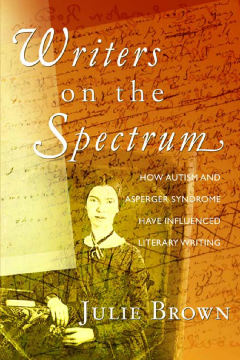
Additional Information
Book Details
Abstract
From Hans Christian Andersen's fairytale characters to Lewis Carroll's Wonderland and Emily Dickinson's poetic imagery, the writings and lives of some of the world's most celebrated authors indicate signs of autism and Asperger's Syndrome. Through analysis of biographies, autobiographies, letters and diaries, Professor Julie Brown identifies literary talents who display characteristics of Autistic Spectrum Disorder (ASD) and uncovers the similarities in their writing that suggest atypical, autistic brains.
Providing close readings of authors' works, Brown explores writing processes, content, theme, structure and writing style to reveal the underlying autistic traits that have influenced their writing. The book provides an overview of ASD and common threads in autistic writing followed by an illuminating exploration of how these threads are evident in the literature of both well-known and lesser known authors.
This groundbreaking study of autism in literature will be of interest to anyone with a professional or personal interest in literature or the autistic mind.
Julie Brown has been a professor of writing and literature for over 20 years. Her first two books of literary criticism, American Women Short Story Writers and Ethnicity and The American Short Story, explore the works of culturally marginalized writers. Her current research project investigates the link between autism and creative writing. Julie's son has Asperger's Syndrome and she is involved as a volunteer in the autistic community. Julie serves as an academic advisor for autistic individuals at Clatsop Community College in Astoria, Oregon and she also teaches a course she developed on autism in literature. She lives in Astoria.
Once in a great while a book comes along that stops you in your tracks. Writers on the Spectrum is one such book. Like a gifted surgeon, Julie Brown tackles some of our best loved works of literature, cutting through the layers of literary technique to reveal the characteristic traits of Autism and Asperger Syndrome within. In so doing, she casts a new light on these works of literature, and presents the particular artistic gifts of autism as a special gift to humanity.
This book is a must read, not just for lovers of literature, but also for people on the spectrum and the mental health professionals who work with them.
Dr. Patrick Prindle, Professor of Psychology, Clatsop Community College, OR
